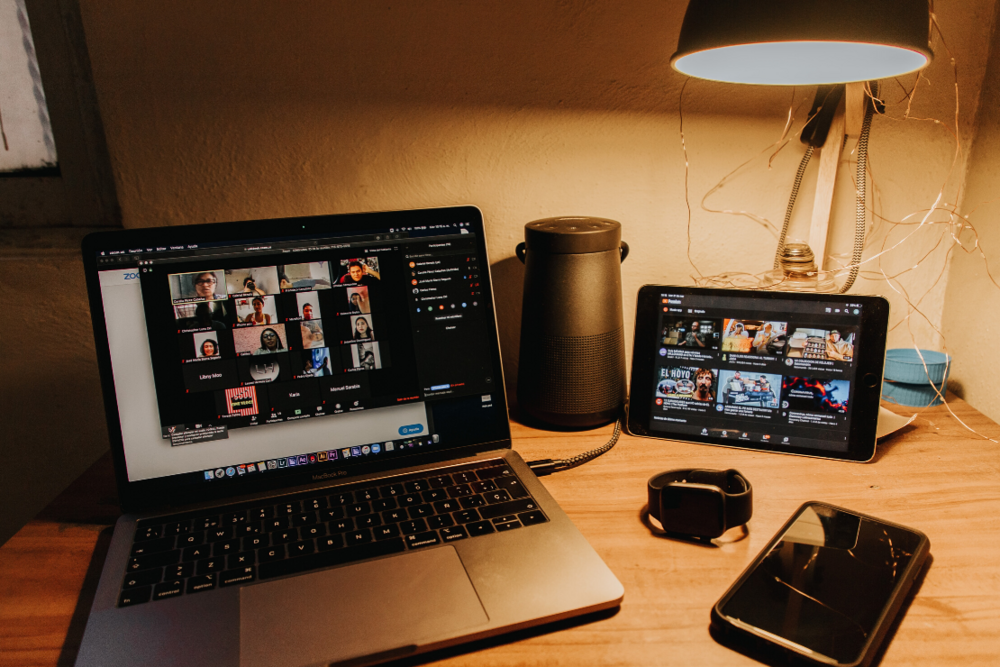Sabrina Kelly on Building and Managing Distributed Teams
Jul 04, 2019

6-min read
Sabrina Kelly is the current VP of Talent and has been working in the area of hiring and talent for most of her career. She has worked within and around remote managed teams for much of this time, and explains the best ways to approach building and maintaining a remote team.
When it comes to building or adopting a distributed model for your startup, it all boils down to one thing: being intentional. To be successful, founders can't just wing it. From ideation to execution, every decision must be purposeful, thoughtful, and intentional.
“There are a lot of advantages to building a distributed team,” says Sabrina. “But since there are a number of things to consider before diving in, founders need to be thoughtful and intentional as they embark on that journey.”
Here's what founders need to keep in mind as they consider and build a distributed team:
01. It isn't necessarily cheaper to build a distributed team.
02. It's vital to still have in-person touch points and opportunities for human connection.
03. It's the small things—like listening and trying new things—that make the biggest difference to successfully managing a distributed team.
04. It pays to be vulnerable.
The future of business is global. Whether you're running a small startup or an international corporation, there are more opportunities than ever to move into new markets and shift from a location-based workforce to distributed teams.
But before you make the switch, there are a lot of factors to consider. Sabrina Kelly, VP of Talent at Techstars and longtime expert on distributed management, argues that for businesses to successfully adopt a distributed model, there are actually four things founders should think about.
“I believe the advantages of having a global talent pool outweigh any challenges that might come with building a distributed culture,” says Sabrina. “But, you do need to know what you're in for and the challenges you'll be up against. And ultimately, you should have a well thought out reason for wanting to tap into a more global talent pool for your startup.”
It's Not Necessarily Cheaper
For many founders, building a distributed team has a strong financial appeal. Not only can they envision physical office space disappearing with all of its associated costs, but they also imagine an overall cheaper workforce.
However, Sabrina cautions: “I think it's a pretty common misconception that hiring or building a distributed team is definitely cheaper. There's a good chance that it might be upfront, but there are a lot of things to consider in terms of cost. One is that while you might save money on having smaller office space or not needing office space at all, you will need to think about having a travel budget to keep your team connected.”
“You want to make sure you're bringing people out to onboard, in person,” she continues, “and have a few other in-person touch points. Those costs definitely add up.”
Sabrina goes on to explain that from an HR standpoint, there are other financial considerations founders need to make when thinking about building a distributed team:
“Most companies have technical debt—but when you build a distributed org, sometimes you accumulate what I'd call people debt,” she says. “Initially, it's easy to run your business in a scrappy way, but as you continue to grow, there's a sort of compliance debt that builds up.”
“This isn't to deter you from hiring folks that aren't in your central location,” Sabrina clarifies. “Quite the opposite. But you do need to think about the fact that, at some point, having a distributed team may trigger to be more expensive. So if you're building a distributed team to save money, you're probably doing it for the wrong reason.”
Connection is a Human Need
There are some unique social differences between location-based businesses and distributed ones. Successfully managing a distributed team requires founders to be conscientious. As Sabrina explains:
“Connection is a very human need. It's critical to the success of any business and employee base, and there's just no substitute for it. That's why it's so important for leaders to be thoughtful about how they're communicating, both with the folks they share the same physical space with and the folks they don't.”
The importance of taking the time to regularly check-in with your distributed team members—both personally and professionally—can't be overstated. Not only does it create a culture where your employees know they're valued and cared about, but it also makes it easier to have honest conversations with them about their mental health and well-being.
“It's really easy for someone to show up to an hour long, one-on-one meeting and act like they're doing great, when they're actually having a really difficult time,” says Sabrina. “That's why it's so important to build trust and connection with your remote employees. If they know you truly care about their well-being, they're more likely to open up about how they're really doing. It also makes all the difficult moments—like giving tough feedback or hitting a major roadblock—easier. Trust trumps everything.”
Sabrina adds that there are two things founders can do to successfully build trust with distributed team members. “One would be to take the time to ask about their weekend, their family and their life on a regular basis,” she explains. “At Techstars we do something called ‘green, yellow, red’ check-ins. It's a really simple concept, but the idea is to give employees the chance to share how they're doing, both personally and professionally, using just a color.”
“The other tip I have for founders is: make sure you take the time to get to know your remote employees personally, when you're onboarding them or have the opportunity to meet with them in-person,” says Sabrina.
Finding balance and managing mental health can be tough for people working outside a central office. So while they might feel like little things, these trust builders go a long way in supporting your employees and the business as a whole.
Sweat the Small Stuff
When you're building a distributed team, a lot can influence your success or failure—including your financials, business model, and team dynamics. But when it really comes down to it, it's the little things that make the biggest difference.
“It's the little things—like listening to feedback and being comfortable trying new things—that make the biggest difference, not some grand gesture,” affirms Sabrina.
“For example, one of the small things we do at Techstars is hold artificially remote meetings. Rather than simply piping our remote employees into a conference room, where all of our non-remote employees are sitting, we spread our team out further, by directing all presenters to sit in another room. This ensures that everyone on the team has a similar experience with the presentation—creating a more inclusive environment for those who are not in the room,” says Sabrina. “It's a really great way for us to show our remote employees that they're noticed, heard and valued.”
While this particular approach works to keep Techstars’ teams united, every distributed org is different. That means founders need to take the time to find out what their remote employees’ needs are, and then work intentionally to meet those needs.
“We know we don't have all the answers,” acknowledges Sabrina, “but we're working to make a difference for our employees by intentionally doing little things to solve their problems and help them feel included.”
Be Vulnerable
Considering the fact that the smallest things have the biggest payoffs, founders shouldn't be afraid to be vulnerable. Not only can this help you gain the trust of your employees, but it also gives you permission to make mistakes as you build your business and develop a company culture.
“If you can create a culture where it's okay to not be right all the time, that's really, really valuable,” says Sabrina. “You don't need to know all the answers and you don't always need to say the right thing. The goal is to make sure your employees know you care, even if you mess up sometimes.”
“For example, say you try some new meeting format, and it totally flops. It's just miserable for everyone involved. Admitting to your team that you know it didn't work and telling them that you're going to try something else shows that you were vulnerable, that you listened and you cared,” explains Sabrina.
Admittedly, acknowledging that you don't know the answer or were wrong about something can be a tough pill to swallow, especially for founders who feel uncomfortable in their new leadership positions. However, doing so creates open space for your employees to be imperfect as well.
“Anything you can do—big or small—to show that you're listening and you're trying, even if you're not perfect, makes a world of difference in terms of the culture you create,” says Sabrina.
About the Author

Sabrina Kelly Image
As Vice President of Talent, Sabrina leads the team that helps Techstars to maximize the value of our most important asset - our incredible network of people. Sabrina's career across multiple markets in the US and Europe started with an early love for talent in the NYC startup scene. She recruited top technical talent for companies like Spotify, IAC and Etsy, then gained exposure to startup HR in the Boston market before ultimately leading People Operations globally at Techstars for five years.
